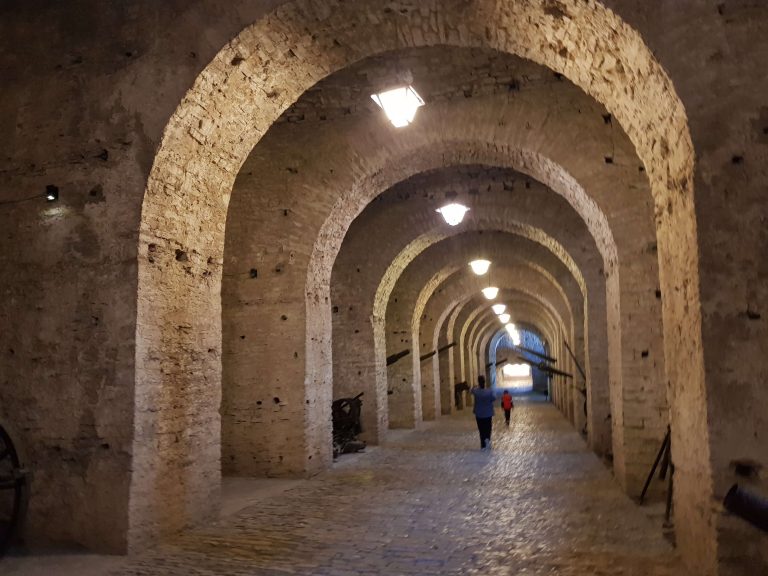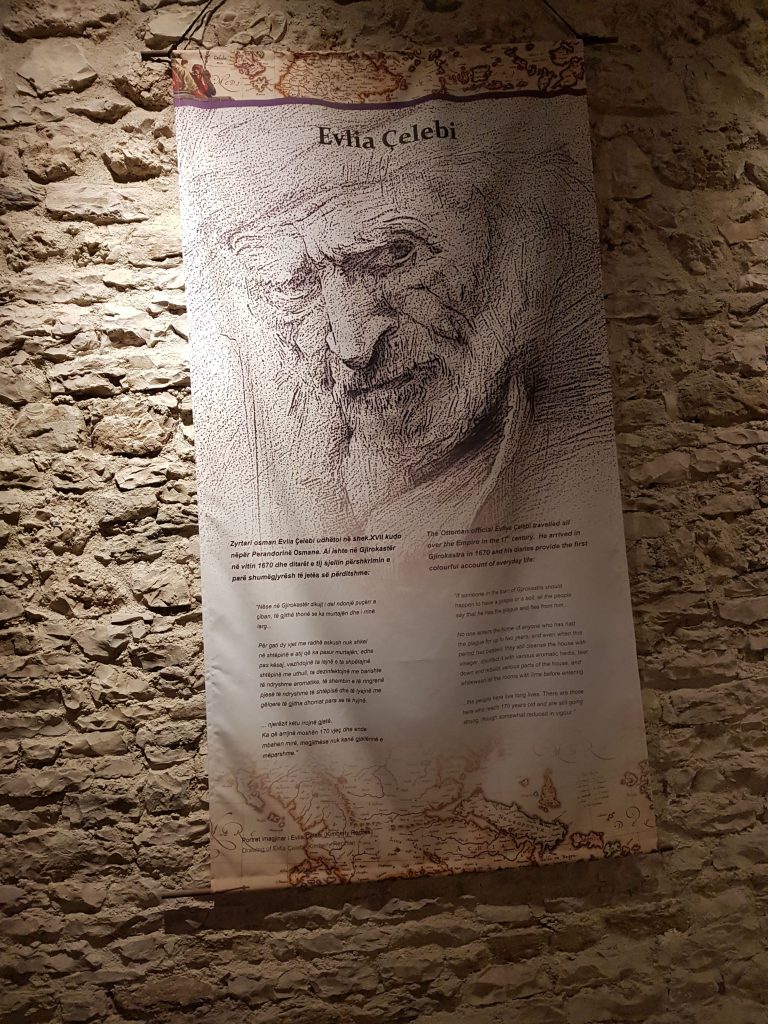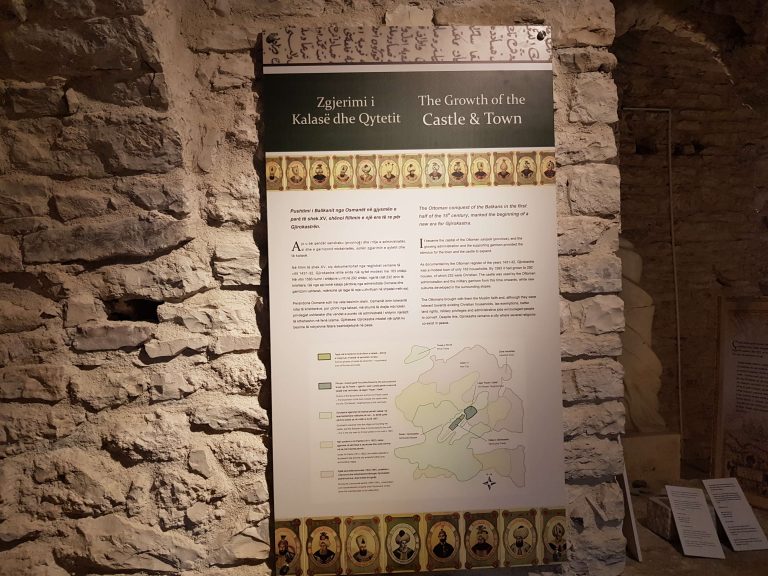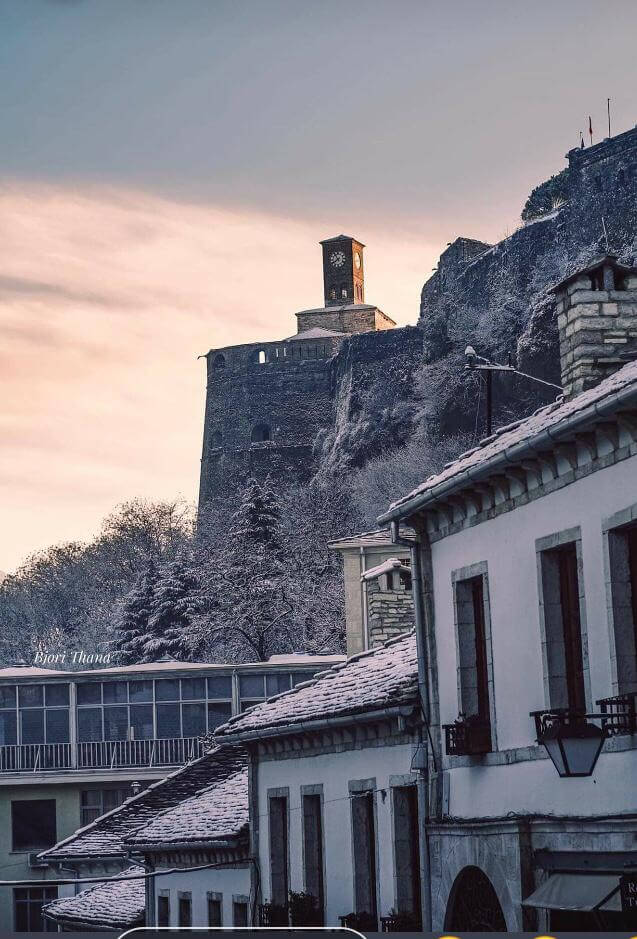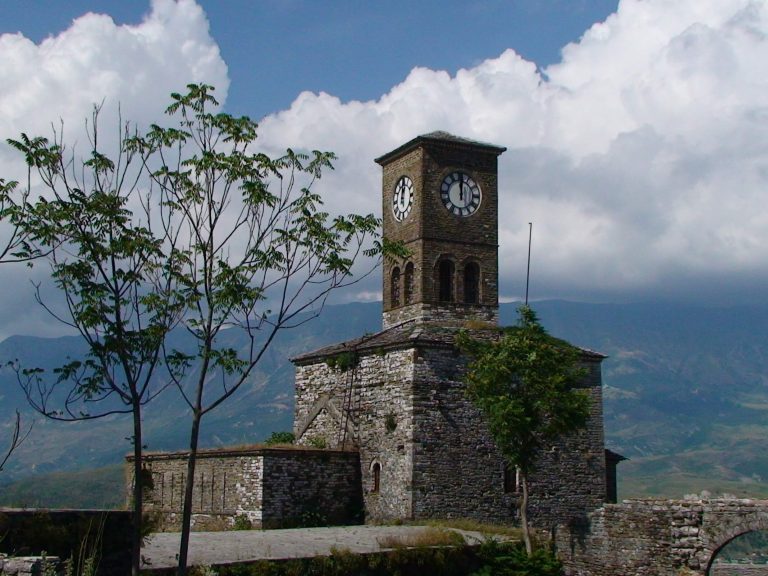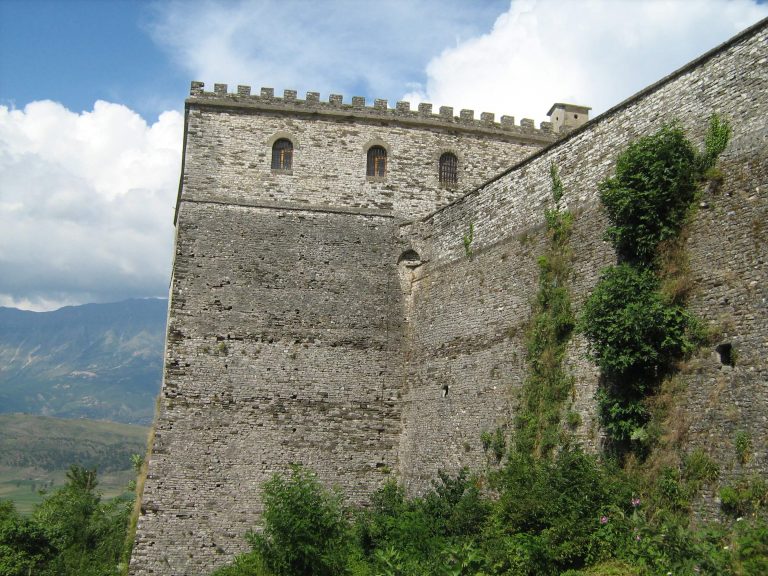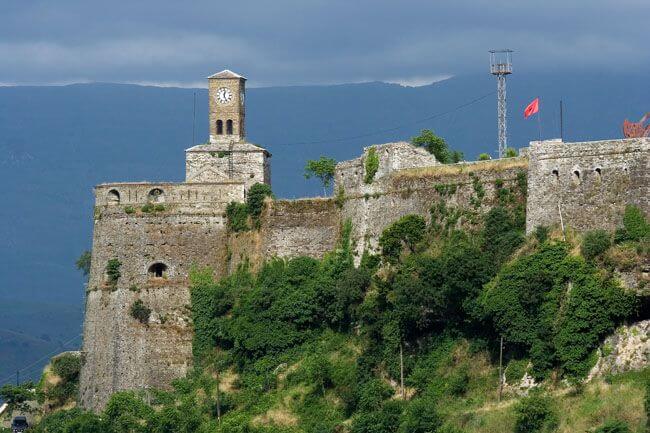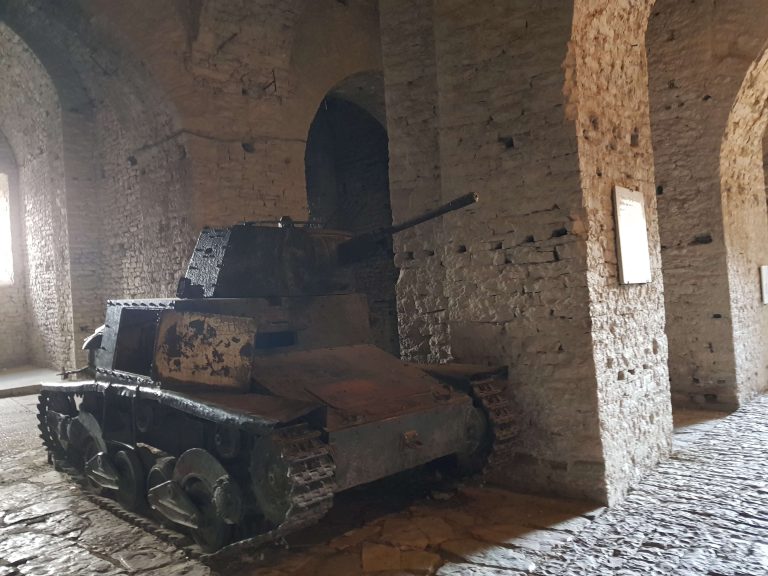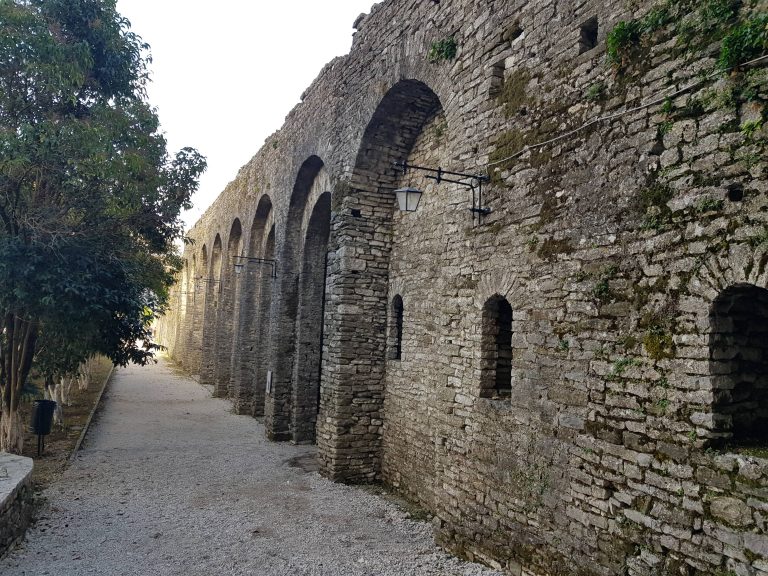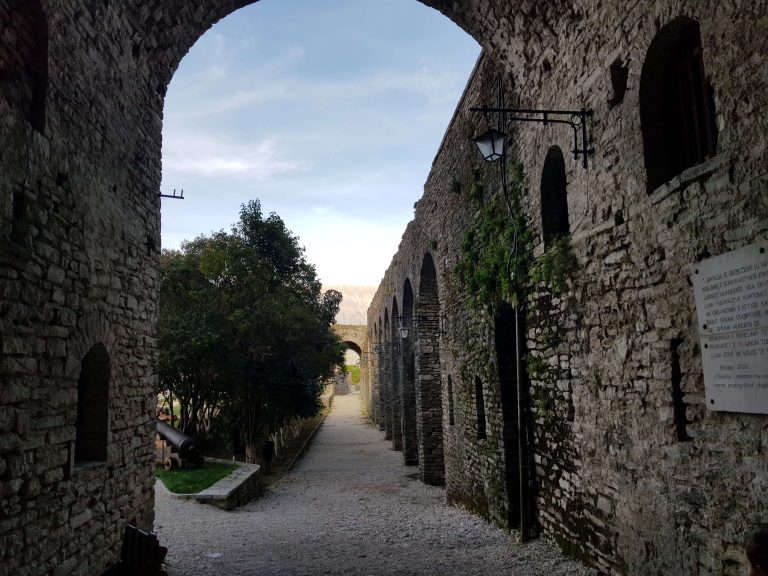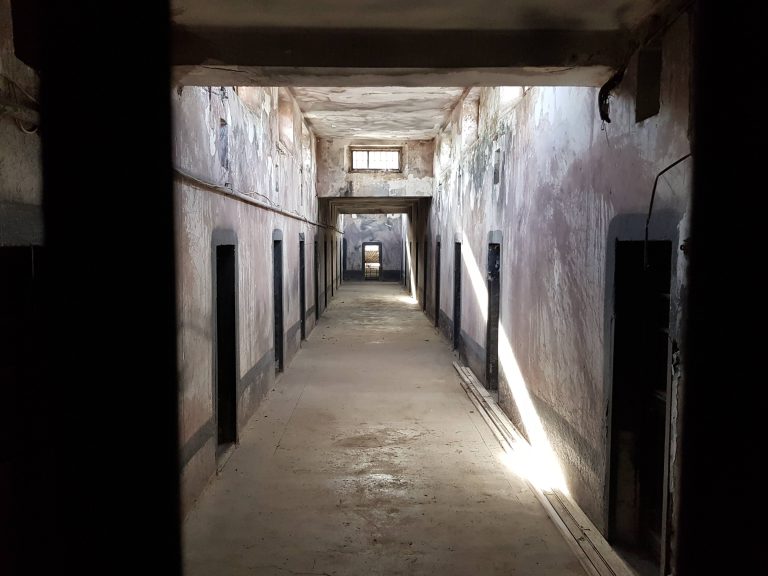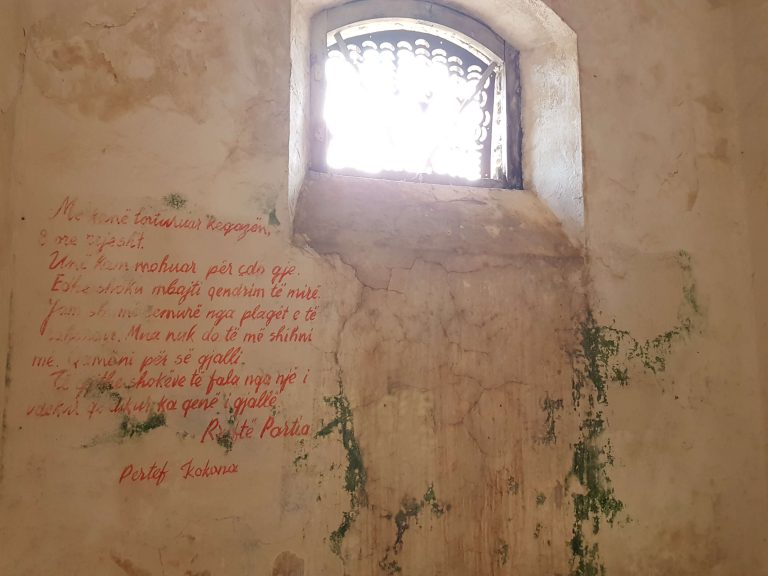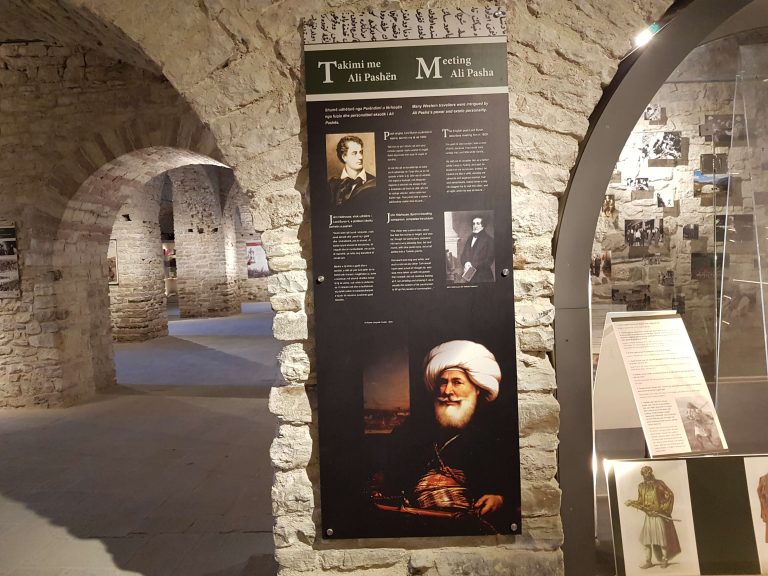The castle is one of Balkan’s biggest castles and undoubtedly one of the most magnificent structures of the city. Entitled Cultural Monument of the first category in 1948 the citadel extends across the 1100-foot-high hillside, like a giant ship made of stone dominating the town offering spectacular views of the strategically important route along the the Drino river valley and the surrounding mountains.
The castle has undergone various additions and changes over the course of the centuries: The first major fortifications were built under the Despots of Epirus in the 12th and 13th centuries. After the Ottoman conquest of the late 14th century the most extensive improvements were made around 1490 by Sultan Beyazid II. From 1811, the Ottoman governor Ali Pasha of Tepelena added many elements, including the clock tower on the eastern side. He also completed fortifying the full area of the bluff. In addition he built an aqueduct to bring water to the castle from distance of over 10 km from the surrounding mountains. In the 1930s it was redesigned as a prison by the Italians at the request of King Zog. It was closed in the 1960s.

